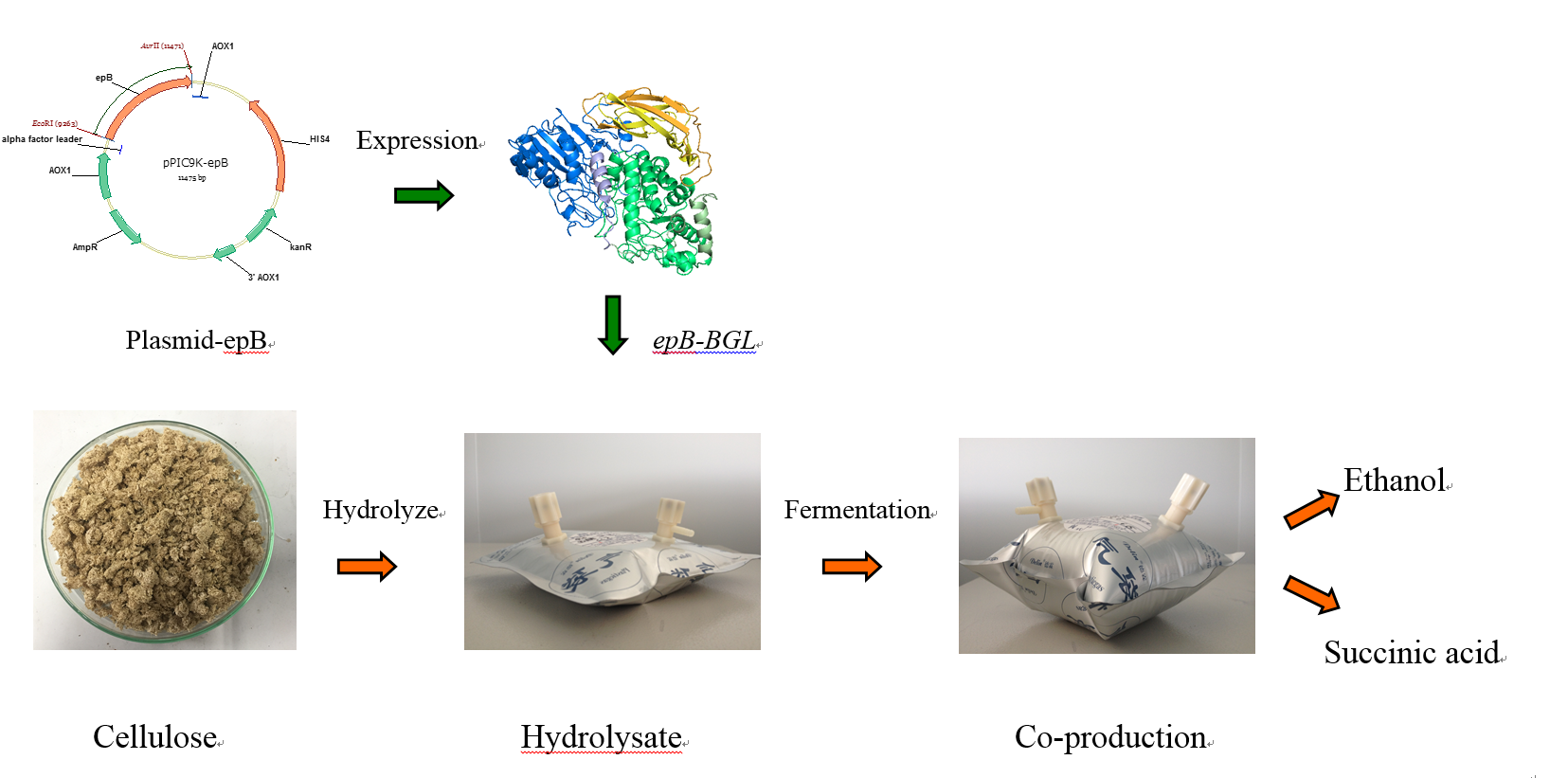A Novel β-glucosidase Applied for Co-producton of Ethanol and Succinic Acid
Scientists from Guangzhou Institute of Energy Conversion (GIEC), Chinese Academy of Sciences (CAS) discovered a novel β-glucosidase (BGL) gene and used a co-beneficial system to consume both fermented sugars and gases, so as to produce bio-ethanol and bio-succinic acid more efficiently.
Using renewable lignocellulosic resources as raw materials to produce biofuels and biochemical is of great interest currently, as they are inexpensive and available in large quantities. Therefore, the efficient conversion of lignocellulosic biomass into ethanol for fuel and its polygeneration products has become a priority.
BGL is a kind of cellulase that act in cooperation to convert lignocellulose to fermentable sugars. The high cost and low titers of BGL production are major limitations in the development of feasible technologies for converting lignocellulose into biofuels and other useful chemicals. Thus, the development of novel superior BGLs is important.
Dr. LIANG Cuiyi, Prof. QI Wei and their colleagues from GIEC recently cloned and characterized an organic solvent-stimulated BGL from Hypocrea sp. W63 was named epB-BGL. The results have been published in Cellulose.
The novel epB-BGL from Hypocrea sp. W63 has a specific activity using p-nitrophenyl-β-d-glucoside (pNPG) as substrate and its activity could be stimulated with the addition of ethanol. Furthermore, other organic solvents were also able to stimulate the activity of the enzyme. Due to this distinctive performance, epB-BGL was used to release fermentable sugars from a sugarcane bagasse hydrolysate (SCH) for ethanol and succinic acid co-production.
“This is the first successful try to use a flexible gas cultivation system based on co-fermentation with two anaerobic strains that use incomplete SCH, which may be a promising biorefinery platform.” said QI, the corresponding author of the study.
The research team led by Prof. QI Wei works on the biorefinery of lignocellulose to establish fermentable sugar and its utilization for bio-fuel and other valued chemicals for many years. Under the supports of national basic and applying research programs, numerous effective sustainable pretreatment methods for decomposition of lignocellulose, effective enzymatic hydrolysis and fermentation system, and screening of high-efficiency cellulase and BGLs were operated and applied in the demo plant.

Contact:
Dr. QI Wei
Guangzhou Institute of Energy Conversion, Chinese Academy of Sciences
(http://english.giec.cas.cn/)
Guangzhou 510640, China
Tel: 86-20-37029685
E-mail: qiwei@ms.giec.ac.cn
